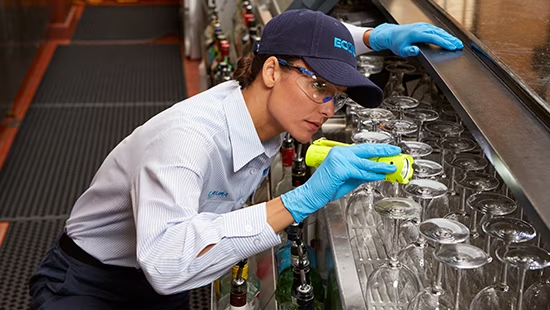Woodworm Infestations in Historic Buildings: Preservation Strategies
Historic buildings are invaluable treasures that connect us to our past. However, they often face unique challenges, one of the most insidious being woodworm infestations. Woodworms, the larvae of wood-boring beetles, can compromise the structural integrity of these cherished sites. Addressing infestations in historic buildings requires a delicate balance between effective pest management and preservation of historical value. This article outlines strategies for identifying, managing, and preventing woodworm infestations in historic structures.www.shashel.eu
1. Understanding the Impact of Woodworms on Historic Buildings
Structural Damage
Woodworms tunnel through wood, weakening beams, floors, and furniture. In historic buildings, where original materials and craftsmanship are often irreplaceable, this damage can threaten the very structure of the building.
Cultural Heritage Concerns
Preserving the integrity of historic buildings is crucial not only for structural reasons but also for cultural heritage. Damage from woodworms can alter the character and authenticity of these sites, making effective management essential.
2. Identifying Woodworm Infestations
Signs of Infestation
To address woodworm issues effectively, early detection is vital. Homeowners and preservationists should be aware of the following signs:
- Exit Holes: Small, round holes in wood surfaces indicate adult beetles have emerged.
- Frass Accumulation: The fine powdery residue left behind by woodworms can often be found near exit holes.
- Sound: In quiet environments, you may hear faint scratching or chewing sounds as woodworms feed within the wood.
Regular Inspections
Conducting regular inspections, especially in areas with high humidity or previous infestations, can help catch problems early. This is particularly important in historic buildings, where conditions may be more conducive to woodworm activity.
3. Preservation Strategies
3.1. Integrated Pest Management (IPM)
Implementing an IPM approach allows for a combination of preventive and reactive strategies tailored to the specific needs of historic buildings.
- Monitoring: Establishing monitoring systems to detect early signs of infestation can help manage populations before they escalate.
- Cultural Controls: Maintaining proper humidity and temperature levels can deter woodworm activity. Keeping the building well-ventilated helps reduce moisture, which is a key factor in woodworm attraction.
3.2. Treatment Options
When infestations are confirmed, choosing the right treatment is essential to preserve the building’s historical value.
- Chemical Treatments: While chemical insecticides can be effective, they should be used cautiously in historic buildings. Opt for products that are less invasive and approved for use in conservation.
- Natural Remedies: Some natural treatments, such as borate solutions, can provide effective control with minimal impact on the surrounding environment and materials.
3.3. Structural Repairs
In cases of extensive damage, structural repairs may be necessary. When replacing wood, it’s crucial to use materials that match the original as closely as possible to maintain historical authenticity.
- Conservation Techniques: Rather than replacing damaged wood, consider using conservation techniques to stabilize the existing structure. This approach preserves the integrity of the original materials while providing necessary support.
4. Preventive Measures
Environmental Controls
Creating an environment that is less conducive to woodworm infestations is vital for long-term preservation.
- Humidity Control: Use dehumidifiers in particularly damp areas to keep moisture levels in check. Aim for a relative humidity of 50% or lower to deter woodworm activity.
- Temperature Management: Keeping buildings cool can slow down woodworm development, particularly in warmer months.
Education and Awareness
Educating staff and visitors about the importance of preservation and the signs of woodworm infestations can foster a proactive approach to building maintenance.
- Training: Regular training for maintenance staff on identifying and responding to woodworm signs can be beneficial in managing the health of historic buildings.
5. When to Seek Professional Help
If woodworm infestations are suspected or confirmed, consulting with pest control professionals who specialize in historic preservation is recommended. They can provide:
- Expert Assessment: Professional evaluations can determine the extent of the infestation and recommend appropriate treatments that align with preservation goals.
- Tailored Solutions: Experts can offer insights into the best practices for treatment and ongoing management while minimizing harm to the historical fabric of the building.
Conclusion
Woodworm infestations in historic buildings pose significant challenges to preservation efforts. By implementing effective identification and management strategies, property owners can safeguard these cultural treasures for future generations. Through a combination of monitoring, treatment, and preventive measures, it is possible to address woodworm issues while respecting the historical significance of the structure. The goal is not only to eliminate the pests but also to maintain the integrity and authenticity of our architectural heritage.



